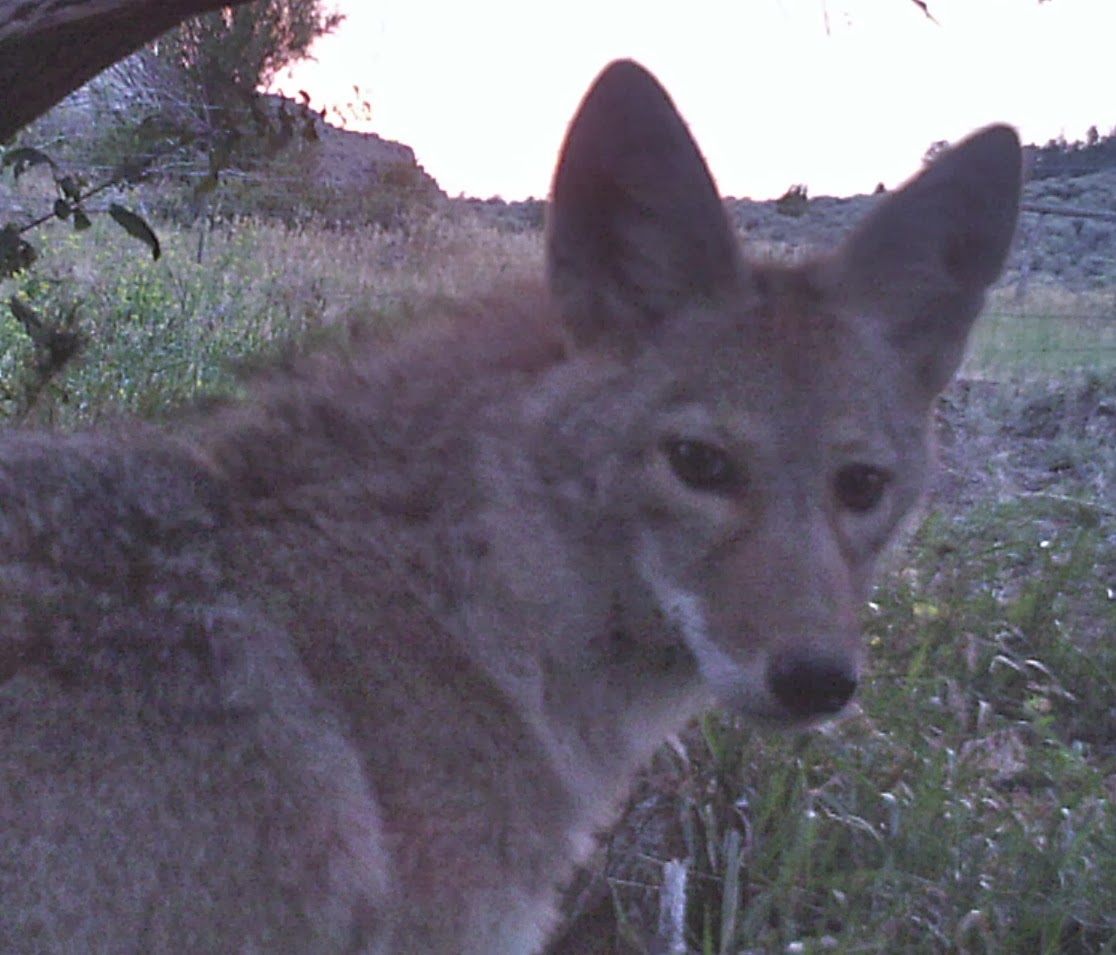I generally hunt close to home. In part, this is because there is very good hunting in the Butte/Big Hole River watershed area; it's also because every minute spent driving is one less minute spent hunting.
Pronghorn antelope season begins in early October, two weeks before the general deer and elk season. It's generally a pleasant time to hike around the hills. At first glance, it seems that the sagebrush prairie is flat and monotonous, with no way to stalk such a sharp-eyed creature. The low hills and coulees, however, offer excellent cover so long as the antelope don't see you first:
They do tend to be shy of roads, though I try not to hunt more than a mile or so from the nearest two track. Otherwise, the get pretty heavy (it's usually easier to carry than drag on the barren, rocky, cactus-strewn ground):
My friend and colleague Keith, a pilgrim from the Midwest, became an antelope hunter this year. Here he is, creeping through the sagebrush to get within rifle range of a herd bedded in a coulee:
A glacial boulder makes for good cover and a steady rest:
My "Little Brother" AJ, then a student down at the University of Montana, joined me for a mule deer hunt. He has the sharp eyes of youth, and often spots deer that I can barely see with binoculars. He has also become an excellent judge of range and an accurate marksman (I killed a smaller buck with a much closer shot!):
Though a long haul back to the truck, it was worth it for this fine, heavy-bodied buck:
We use non-toxic all-copper Barnes bullets, partly to avoid poisoning eagles and other carrion feeders:
And partly to avoid poisoning ourselves. I found this lead fragment in some sausage a friend gave me:
We like the organic, free-range meat that comes with hunting, but the view is outstanding too. Here's my friend and colleague Frank taking a bead on a mule deer, with an interesting spiral cloud on the horizon:
Hunting deer and antelope can be a social affair, but I often myself in the solitary pursuit of elk. I cover a lot of miles. In an area where the timber was cut in the late 19th century, I found a sawyer's file on a stump. I'll bet the man who lost it had about $2.00 (a day's wages and the cost of a saw file c. 1900) deducted from his paycheck:
The triangular file's sides were made to fit the angle of teeth in a crosscut saw blade:
One area I hunted was shared by another large predator, as evidenced by this partially eaten and cached mule deer:
I saw the other hunter's tracks (I estimate a 150-pound+ male) several times, and one evening while hiking back to the truck got a glimpse of the actual mountain lion. Big kitty:
The cougar's presence did not seem to noticeably reduce the deer or elk population, and in mid-November a new storm brought fresh snow that quieted the crusted snow from late-September and early-October storms. Circling a basin high above a road, I cut fresh tracks and followed them to where the elk were bedded. The lead cow and several others crashed away before I could even bring the rifle to my shoulder, but this fat young cow lingered for just a second:
It took two days to haul the meat out, thanks to the help of my friend Dave. With the freezer full, it was time to roast the Thanksgiving turkey, sharpen the ski edges, and give thanks to this beautiful land:

















































